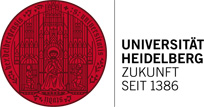Universität Heidelberg: 625 Years – A Brief Chronology
1385/1386
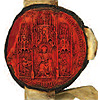 On 23 October 1385, Pope Urban VI approves the founding of the university in Heidelberg by Elector Palatine Rupert I. Instruction begins a year later on 18 October 1386 in the three faculties: theology, jurisprudence and philosophy. Medicine follows two years later in 1388. The first rector is Marsilius von Inghen of Holland; the first professors come from Paris and Prague.
On 23 October 1385, Pope Urban VI approves the founding of the university in Heidelberg by Elector Palatine Rupert I. Instruction begins a year later on 18 October 1386 in the three faculties: theology, jurisprudence and philosophy. Medicine follows two years later in 1388. The first rector is Marsilius von Inghen of Holland; the first professors come from Paris and Prague.
1556-1617
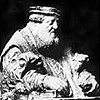 After assuming power in 1556, Elector Palatine Otto Henry converts the university into a reformed protestant institution and hands down 1,558 new statutes, which remain largely in force until 1786. The university enjoys its first blossoming. Esteemed as a centre of the European sciences and culture, its international vibrancy draws professors and students from all over Europe.
After assuming power in 1556, Elector Palatine Otto Henry converts the university into a reformed protestant institution and hands down 1,558 new statutes, which remain largely in force until 1786. The university enjoys its first blossoming. Esteemed as a centre of the European sciences and culture, its international vibrancy draws professors and students from all over Europe.
1618-1652
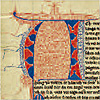 The Thirty Years’ War (1618-1648) hits the university hard. Teaching is suspended numerous times. In 1623, the Bibliotheca Palatina, one of the most valuable collections of German manuscripts of the Middle Ages and the Early Modern Age, is carted off to Rome in reparation for the war. The university reopens in 1652.
The Thirty Years’ War (1618-1648) hits the university hard. Teaching is suspended numerous times. In 1623, the Bibliotheca Palatina, one of the most valuable collections of German manuscripts of the Middle Ages and the Early Modern Age, is carted off to Rome in reparation for the war. The university reopens in 1652.
1688-1800
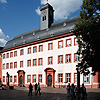 The university’s arduous comeback after the Thirty Years’ War shatters with the complete destruction of Heidelberg by the troops of King Louis XIV in the Palatine War of Succession (1688-1697). The doors of the university remain closed until 1703. Finally in 1712, the cornerstone is laid for a new university building, today's Old University. For numerous reasons, not the least of which is financial mismanagement, the university experiences a period of decline through the end of the century.
The university’s arduous comeback after the Thirty Years’ War shatters with the complete destruction of Heidelberg by the troops of King Louis XIV in the Palatine War of Succession (1688-1697). The doors of the university remain closed until 1703. Finally in 1712, the cornerstone is laid for a new university building, today's Old University. For numerous reasons, not the least of which is financial mismanagement, the university experiences a period of decline through the end of the century.
1803-1900
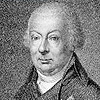 In 1803 Baden acquires the university and, upon the edict of Karl Friedrich of Baden, is reorganised as a state-financed academy. In 1805 it is named Ruperto Carola – a combination of the name of the university’s founder and Karl Friedrich, Grand Duke of Baden. As a cosmopolitan and liberal university, Heidelberg enjoys its second golden age during the 19th century. Through the work of Robert Bunsen, Gustav Kirchhoff and Hermann Helmholtz, the natural sciences in particular reach a zenith.
In 1803 Baden acquires the university and, upon the edict of Karl Friedrich of Baden, is reorganised as a state-financed academy. In 1805 it is named Ruperto Carola – a combination of the name of the university’s founder and Karl Friedrich, Grand Duke of Baden. As a cosmopolitan and liberal university, Heidelberg enjoys its second golden age during the 19th century. Through the work of Robert Bunsen, Gustav Kirchhoff and Hermann Helmholtz, the natural sciences in particular reach a zenith.
1900-1923
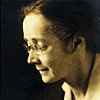 Around the turn of the century, the Baden state government permits women to enter the university for the first time. In April of 1900, Georgine Sexauer from Karlsruhe is the first female student to enter her name in the Matriculation Register of Ruperto Carola. Finally, in the year 1923, Gertrud von Ubisch (pictured) is the first woman to receive her professorship in Heidelberg.
Around the turn of the century, the Baden state government permits women to enter the university for the first time. In April of 1900, Georgine Sexauer from Karlsruhe is the first female student to enter her name in the Matriculation Register of Ruperto Carola. Finally, in the year 1923, Gertrud von Ubisch (pictured) is the first woman to receive her professorship in Heidelberg.
1933-1945
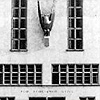 With the takeover by the National Socialists, 59 of the 214 Heidelberg academics are expelled and disenfranchised. As a symbol of the malevolence of the period, Athena and the inscription “Dem lebendigen Geist” (To the Living Spirit) are removed from above the portal of the New University in 1936. They are replaced with an oversized eagle and the words “Dem deutschen Geist” (To the German Spirit).
With the takeover by the National Socialists, 59 of the 214 Heidelberg academics are expelled and disenfranchised. As a symbol of the malevolence of the period, Athena and the inscription “Dem lebendigen Geist” (To the Living Spirit) are removed from above the portal of the New University in 1936. They are replaced with an oversized eagle and the words “Dem deutschen Geist” (To the German Spirit).
1946-1967
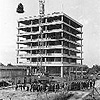 After the end of the war, instruction slowly resumes. The first rector of the post-war period is the surgeon Karl Heinrich Bauer. The university now begins to evolve at three locations: in the Old Town (humanities), in Bergheim (medicine), and beginning in the 60s, in Neuenheimer Feld (natural sciences, medicine).
After the end of the war, instruction slowly resumes. The first rector of the post-war period is the surgeon Karl Heinrich Bauer. The university now begins to evolve at three locations: in the Old Town (humanities), in Bergheim (medicine), and beginning in the 60s, in Neuenheimer Feld (natural sciences, medicine).
1968-1974
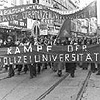 Burgeoning numbers of students and a progressive differentiation of the disciplines characterize this phase. After the student unrest that marked this period, the university is reorganised in 1969. The five faculties are temporarily divided into sixteen (in 2002 the number is reduced to twelve).
Burgeoning numbers of students and a progressive differentiation of the disciplines characterize this phase. After the student unrest that marked this period, the university is reorganised in 1969. The five faculties are temporarily divided into sixteen (in 2002 the number is reduced to twelve).
2006-2011
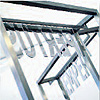 From the initial round of the federal and state Excellence Initiative in 2006/2007, Ruperto Carola receives funding for three graduate schools and two Clusters of Excellence and is one of nine universities in Germany awarded additional funds for its future concept, “Heidelberg: Realising the Potential of a Comprehensive University”.
From the initial round of the federal and state Excellence Initiative in 2006/2007, Ruperto Carola receives funding for three graduate schools and two Clusters of Excellence and is one of nine universities in Germany awarded additional funds for its future concept, “Heidelberg: Realising the Potential of a Comprehensive University”.
From October 2010 to October 2011, the university is celebrating its 625th anniversary, true to its motto, Semper Apertus – The Future. Since 1386.

